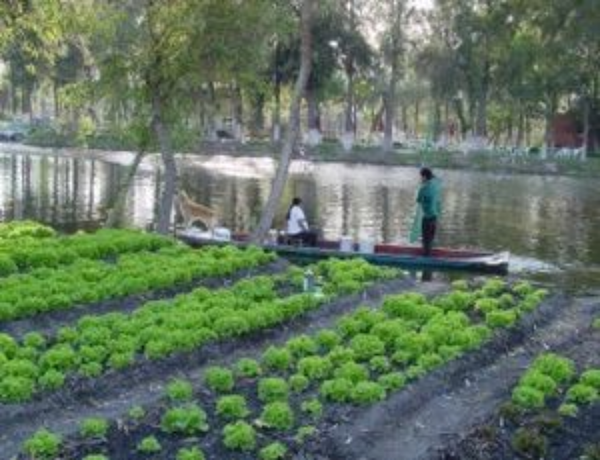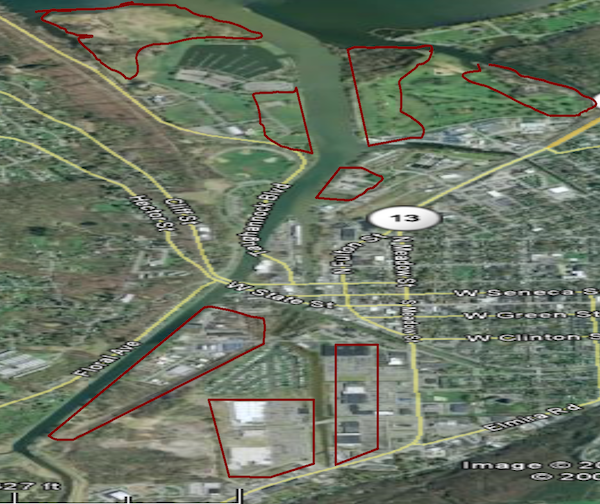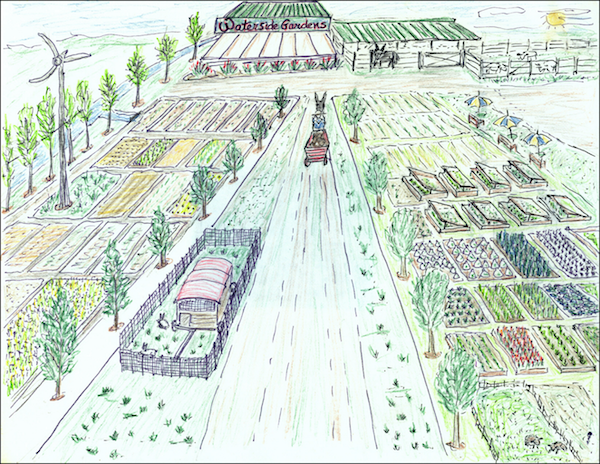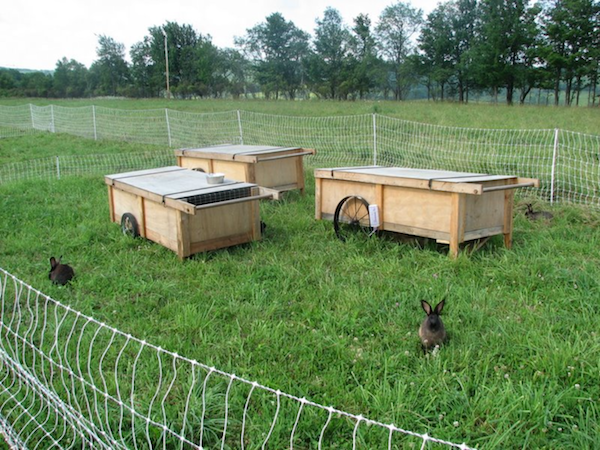Recently in urban Category
By Karl North
The vulnerability of cities and suburbs in the post-petroleum era has been the object of much debate because their present organization makes their operation so energy-intensive. The debate heretofore has tended to swing between two extremes. One claims that these forms of social organization on the land are so unsustainable that their populations will be forced to abandon them gradually as the energy descent progresses.[1]
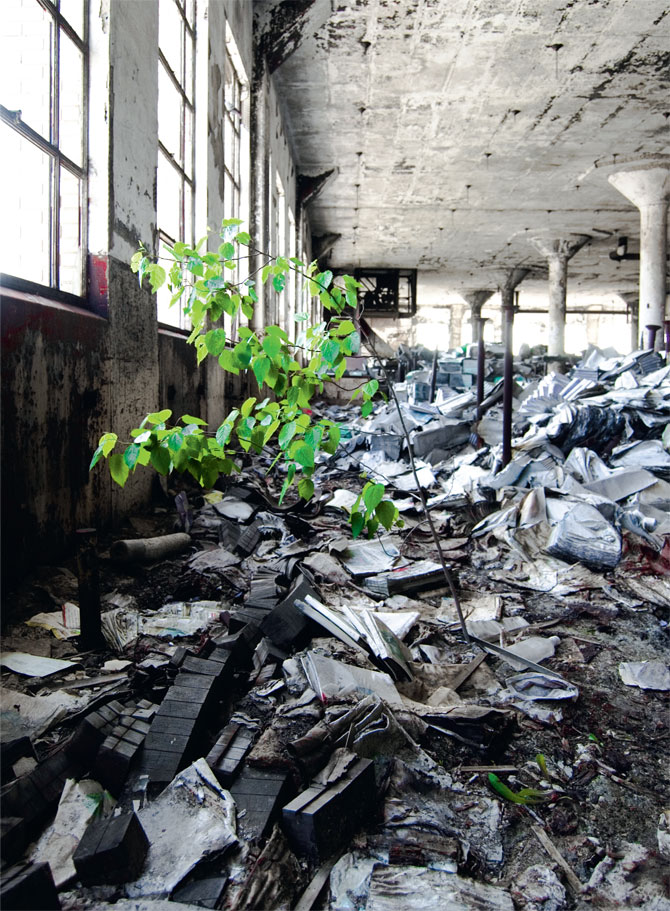
Figure 1. A tree grows in Detroit
(photo by James Griffioen, vice.com)
James Kunstler, a well-known critic of the kind of cities and suburbs that have emerged in recent decades, puts it bluntly:
The whole suburban project I think can be summarized pretty succinctly as the greatest misallocation of resources in the history of the world. America took all of its post-war wealth and invested it in a living arrangement that has no future.[2]
The other extreme entertains dreams of massive programs of public transportation to save suburbia. It also relies heavily on technologies like high-rise agriculture and on the efficiencies of population density to save cities. This is the vision of the eco-cities movement.
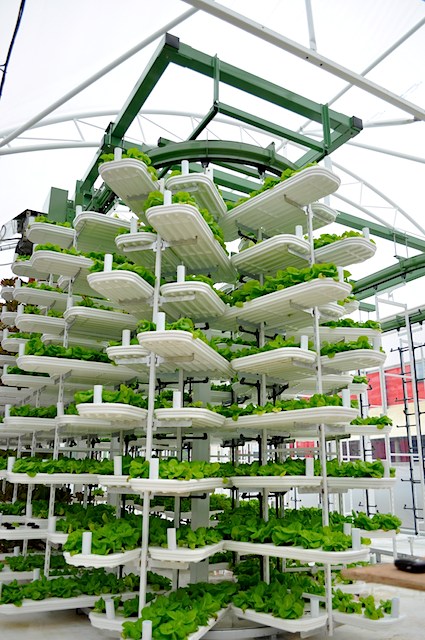
Figure 2. Techno-fantasy unchained
(Time magazine via City Farmer News)
Neither of these scenarios makes much sense. The abandonment thesis ignores the immense accumulated wealth of the built environment in metropolitan areas, which is not likely to be left to fall apart, but will more likely support a certain level of human population if salvaged for other uses than it was originally designed for.[3] It is conceivable that modern society will be reduced to energy inputs available in 1800, before much use of fossil fuels. But that would not mean a simple return to what life was like in those times, due in part to the bonanza of accessible raw materials that the present built environment represents (a good thing), and in part to two hundred years of accumulated damage to the planetary resource base (not so good) that was unimaginable in 1800.
On the other hand, the claim that technological improvement can keep cities and suburbs functioning in the current ways at current population levels fails for many reasons. First, it perpetuates the above-mentioned accumulation of damage to necessary ecosystemic functions, damage that is intrinsic to “technological improvements,” damage that is already causing exponential growth in the operating costs of metropoles. Then there are the two reasons that the technological savior argument always has failed: there is a limit to the efficiencies that can be delivered by technology, and every technological advance requires an increase in complexity in the socio-economic system, with a resulting increase in consumption of energy and other raw materials in an era of increasing resource scarcity.[4]
Moreover, as genres of social organization and human landscapes, modern cities and suburbs are among the most energy consumptive imaginable because their continued existence relies on a broader agro-industrial base. Most calculations of the energy budgets of metropolitan areas far underestimate because they fail to account for the energy embodied in their construction and maintenance, which includes the vast and often distant agricultural and industrial plant, transport, and communication systems necessary to keep them running. This diagram suggests the scope of the support system required just to keep a metropolitan population in food.
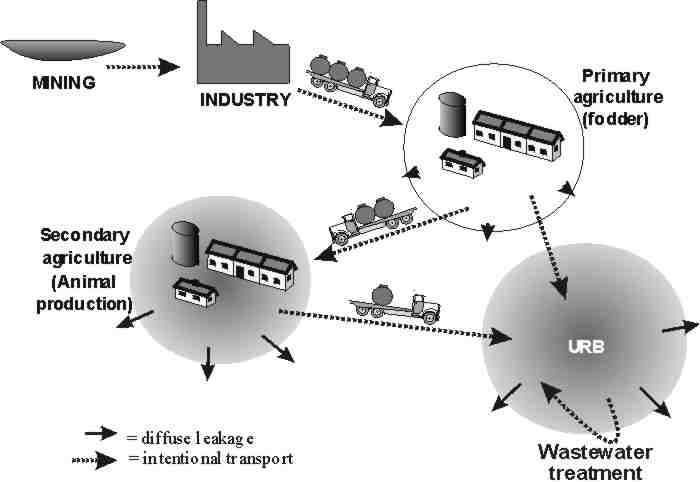
Figure 3. “The linear flow of minerals from mines to farms and then dense human settlements leads to depletion at one end and the concentration of wastes or dispersion into water at the other.” — Jason Bradford (http://www.theoildrum.com/node/5773), graphic by Folke Günther
Of course, cities have existed ever since the advent of agricultural systems capable of providing the surplus necessary for their growth. But after a period of expansion, often spanning centuries, they have usually destroyed enough of their resource base to cause them to decline. In the last two centuries, cities have grown markedly in size and consumption of resources. But this unprecedented level of urban expansion is entirely reliant on access to fossil energy and other nonrenewable resources that are now becoming permanently more scarce.
The main weakness of the eco-cities movement is its failure to squarely face the increasing scarcity in energy and other resources and seriously consider its implications in the energy descent. Green or new urbanists claim that cities like New York are sustainable because their population density allows a smaller per capita ecological footprint than suburbs.[5] The clustering of populations that the ecocities movement advocates does conserve energy in key areas like building heating and human transport. This clustering will be essential in the energy descent at every scale of human community if we hope to avoid not only the energy costs of most present building configurations and their reliance on a distance economy, but also their misuse of agriculturally valuable land.
But heating and human transport are only one part of the energy cost of operating cities. The green urbanist scenario that compares present cities favorably to present suburbs fails to consider the more comprehensive assessment of many energy descent analysts that no dominant configuration of land use and built environment in the US today, urban, suburban, or rural, is sustainable without fossil fuels. The embodied energy in cities in particular involves upstream energy and material flows along many long production chains, and it requires constant renewal due to entropy (depreciation). Hence embodied energy in cities is commonly three times as high as operational energies like heating and daily human transport.[6]
As a result, the eco-cities movement’s current urban redesigns are characteristically overly complex and overly expensive, and are therefore aimed, like much organically grown food and most present ecovillages, at a gentrified market that will not survive the energy descent. This is not meant to criticize these efforts, but simply to point out that they reflect the economic and cultural choices of a society that has enjoyed cheap energy.
In addition to narrow thinking about the massive inflows of energy and other natural resources that today sustain metropolitan areas, the ecocities movement rarely considers more fundamental questions about urban populations posed by energy descent. In a world where the energy from oil has permitted a tripling of the population and, in rich countries, an average per capita ecological footprint (a measure of resource consumption) so large that it could support 30 African peasants, what is the true carrying capacity? How is the disparity in footprint justified when it reduces the supportable global population? And what is the largest sustainable city when urban population densities are on the order of 67,000 people per square mile[7], and the transportation cost of provisioning such densities from ever-more-distant locations increases with city size beyond the declining energy capacity of the planet?
A More Likely Scenario
A third scenario that I will explore here as more likely than the two considered above envisions a major transformation of both urban and suburban land and resource use to make cities and suburbs habitable in the coming low energy era, although necessarily supporting a much lower population level than they do today. As in all ecosystems, the carrying capacity of these areas will contract to fit the available energy, which sooner or later will be mostly solar.
Carrying capacity (CC) is an essential concept for thinking in scenarios about a future in which access to key resources is declining. Carrying capacity is not just a population level. It is first the level of sustainable resource consumption (SRC) that a particular landscape or resource base can support, which in turn determines the mix of population level and per capita resource consumption or material standard of living. Thus the equation for sustainable resource consumption is
SRC = population × resource consumption per capitawhich makes clear that sustainable carrying capacity in terms of the actual number of people it will support depends on the level of individual consumption:
CC (sustainable population) = SRC ÷ resource consumption per capita
This understanding of carrying capacity raises a concern about present resource consumption. The modern industrial society that urban areas epitomize now relies 80-90% on nonrenewable resources. A society that must return to a resource use rate that rarely uses nonrenewables except as recycled salvage will need to rely mainly on low-input agriculture, aquaculture, and forestry for food and fiber, and similar low-input technologies using renewable and salvageable materials in other areas of production. Hence the inevitability of a return to a relatively low-technology solar energy economy is likely to reduce populations in large metropolitan areas to 10-20% of their current levels.[8] Dispersal from city centers to hinterlands will account for much of the decline. In the end this will be a salutary outcome because it will contribute manpower to the increasingly labor-intensive farming systems that will replace industrial agriculture.
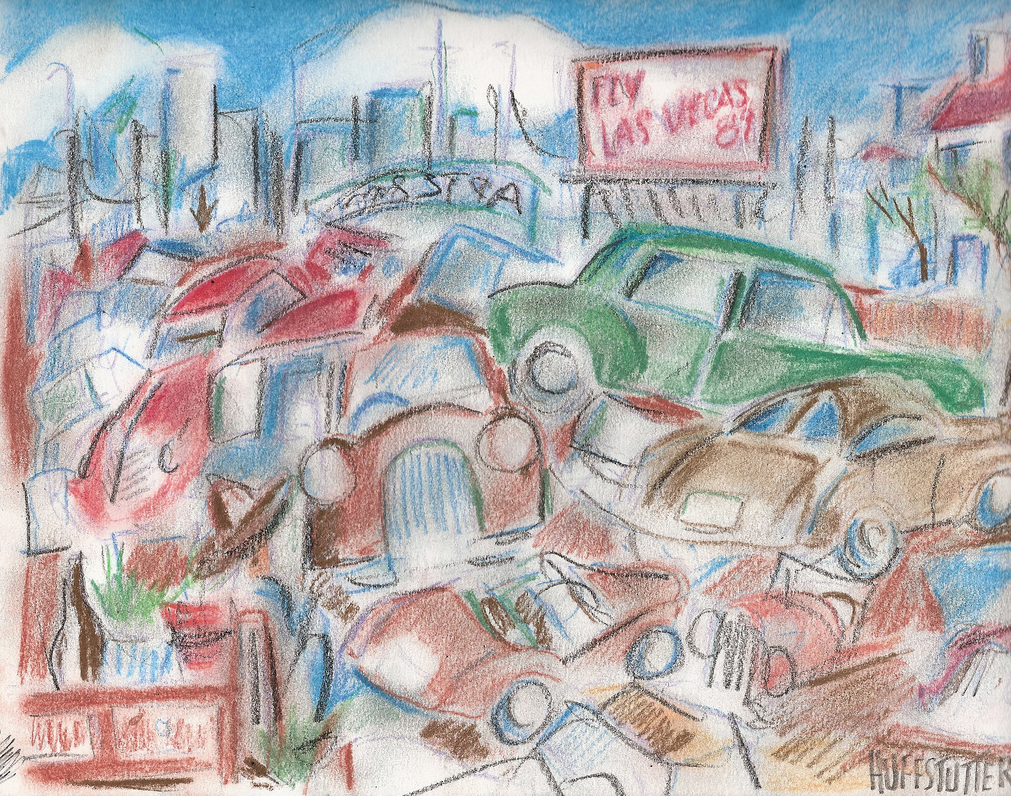
Figure 4. (Pastel by Robert Huffstutter)
How will employment and therefore population shrink in metropolitan areas? The relative concentration of wealth in metropolitan areas has spawned an urban economy that depends heavily on discretionary spending beyond essentials. This part of the economy will tend to shrink first as the energy to support the modern economy becomes scarce.
Also, many people who live in cities and their suburban bedroom communities work in an economy that is parasitic: instead of creating value it simply transfers wealth from one group to another. Much employment in the so-called FIRE sector (finance, insurance, real estate) falls into this category, which also includes much government, advertising, litigation, and lobbying activity — economic sectors that have arisen to exploit our society’s failure to find better ways to perform essential functions. Jobs in this parasitic economy can be expected to disappear early in the energy descent. Many urban clerks in cubicles, data gathering to feed the wealth transfer game, will need to convert to skills that provide life’s basic necessities — food, shelter, basic tools, and services — and for many that will mean leaving the city for farms.
In reality, much of the present urban population will be needed on farms. According to energy descent scientist Richard Heinberg, the de-industrialized agriculture that replaces the current energy-intensive form of food production in the US will require fifty million farmers instead of the present two million.[9] Indeed, there is a growing new farmer movement across the US, served by organizations like Groundswell here in Tompkins County.
The challenge of envisioning a plausible conversion of metropolitan corridors like Bos-Wash to landscapes that are livable sans fossil fuel is to think beyond current models of development or even redevelopment schemes requiring levels of capital investment that a post-petroleum economy cannot afford. The expensive visions of both the green urbanist movement and the nodal cluster suburbanists run aground on this obstacle. Awareness comes slowly because thinking about the upkeep of these structures in the energy descent is often counterintuitive:
Cities overburdened with skyscrapers will soon discover that these structures are liabilities, not assets. The skyscrapers deemed most “innovative” by today’s standards — the ones most dependent on high-tech materials and complex internal systems — will be the greatest failures. This includes many of the new “green buildings.”[10]
An additional hurdle is the current resistance of the denizens of these landscapes to using them differently, but eventually that resistance will melt away as necessity becomes the mother of adaptation.
Throughout their history, metropolitan areas have been centers that have concentrated wealth and power drawn from exploited peripheries. Early in the energy descent they can be expected to use this accumulated advantage to allocate resources disproportionately to themselves and thereby prolong consumption levels and material living standards even as they decline in society as a whole. The maintenance of centralized control that this requires may hinge on something as simple as the ability of security forces, police and military, to fuel their operations on renewables like biodiesel.
Later in the energy descent, however, much of the fuel-intensive economic activity and centralized, hierarchical organization that is the raison d’être of cities and their umbilically connected suburbs will become unaffordable, and the related employment and population will evaporate. The long term budgetary agony of central governing administrations, now well under way, is an early indicator of economic contraction to come. Then human activity will return to a focus on the basic necessities of food and shelter, and economies in these places as elsewhere will self-reorganize around the provision of farming, food systems, and housing that work with minimal fossil fuel. My aim here is to summarize how I think this is likely to happen. The key element in my scenario is the liberation of the built environment and its rearrangement for other uses, a change made possible by the contracting economy and population of metropolitan areas that I have described as inevitable over time in the energy descent. Finally, I will suggest how this scenario might play out in Ithaca, New York and its hinterland, and by extension, in other small cities and towns.
The Post-Petroleum Metropole
Cities located on waterways will remain centers of some distant trade as they have for centuries. On the downside, rising water levels could eventually reduce habitable areas in seaport cities. But for a while as cities and suburbs shrink and depopulate, urban activity will center on salvage of the built environment. As many parts of the built environment are abandoned, we can expect their materials and land to be reclaimed for structures and spaces for growing food and for makeovers of housing and other structures to the level of energy efficiency required by the new economy. Because the return to a solar energy economy will support only a limited population, most land and buildings will stand empty and provide a broad inventory of materials or, once cleared, space for gardens. It is hard to imagine conversion of places like the canyons of south Manhattan to either appropriate housing or food production, so some city zones may remain abandoned except for salvage activities. At the end of Apartheid in South Africa, for example, white businesses left the high-rise section of Johannesburg. The squatters who replaced them could not afford the energy needed to maintain the buildings, and they gradually fell apart.[11] As urban areas everywhere experience a similar drop in energy use, urbanites will abandon energy-intensive structures. Hence a degree of decentralization will occur as urban areas devolve into compact, semi-self-sufficient neighborhood communities separated by empty salvage-yard commons.
The same process will occur in the suburbs, where abandoned residential and commercial structures will serve as stores of materials for low-cost conversion of residential housing for the remaining population. Land to farm will be plentiful, but a main problem will be to end the inefficiencies of suburban sprawl and reconfigure this landscape into the kind of demographically dense agrarian villages that have proved sustainable for centuries. The affordable solution will be to move salvaged building materials or whole abandoned structures into clusters at these central locations. This will recreate at low energy cost the nodal demographic topography that historically has been chosen as the most efficient mode of spatial organization of rural communities the world over.[12] Thus in the long reach of history the extravagance we call suburbia will prove to be a temporary phenomenon.
Once the suburban topography is reformed into economically efficient agrarian communities, some of these villages have the potential to create a thriving trade in surplus food production with the nearest city nodes, which in turn have a surplus of salvage inventory for which they can exchange materials, and products handcrafted from them, and exchange seasonal labor as well. In other words, city and suburb will convert to symbiotic economies that bear some similarity to what they were before the oil age. In the New York metropolitan area, for example, New Jersey (the Garden State!), Long Island, coastal Connecticut, and the Hudson Valley — the city’s former breadbaskets — will regain that function. As the distance economy that cities once depended on becomes too costly, the ability of the near suburbs to convert from bedroom communities to beehives of food production may well determine the size of the population that can remain in the city.
Solarized Housing
In cool climates like the Northeast US, people will be forced to rebuild housing to maximize solar heat and minimize biomass burning, as biomass will regain its traditional role as the key strategic resource and will experience renewed demand for many uses. Here again the expensive models of residential energy efficiency popular today in the green building movement are impediments to visioning. For most of the population the only conversion option will be to use scavenged materials and hand labor, both of which will be plentiful, and in fact all that is necessary to build highly effective passive solar systems for heating both living spaces and water.
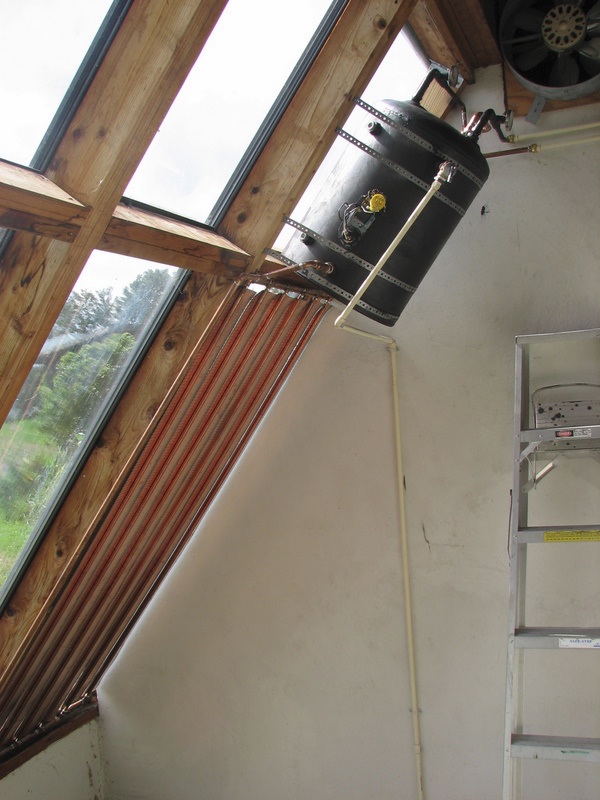
Figure 5. Solar hot water in attached solar greenhouse
To solarize a residence or other building that needs to be heated for all-season use, urbanites will raze city structures that block it from full southern exposure and will use their insulation, glass, masonry, and plumbing hardware to convert it to reliance mostly on the sun for heat and hot water. Widespread conversion will occur when the massive city and suburban built environment inventory becomes available for salvage, because this type of solarization requires no expensive technology or skills beyond elementary carpentry and plumbing. Enough business buildings to support the shrunken economy will be converted in the same way. Gradually buildings made of wood, with their short turnover time of a few decades, will give way to more durable masonry salvaged from unusable structures. The masonry will perform the added function of furnishing the thermal mass to store solar energy required by passive solar heating systems.
Food Production Systems
Like most current alternative architectural models, most organic agriculture grew in the age of cheap oil and takes for granted many of its luxuries. Food production everywhere will eventually adapt much more closely to farming in nature’s image. Like natural ecosystems, farms will have to be largely self-sufficient in inputs, including a lot of human and animal labor and relatively simple machines and tools.
City food production will reach limits, making city populations dependent on the development of farming in the hinterlands that had been suburbs. Once most empty urban spaces are used for farming, space will be a limiting factor on urban growing because demolition and removal of buildings in the energy descent will be very labor intensive. Another limiting factor will be lack of space to “grow” fertility either as green manure or manure from pastured livestock. This need for fertilizer could motivate a return to transport within the metropole using animals fed from fields outside cities, animals like those whose manure supported urban food production until well into the industrial era. In many metropolitan locations, efficient steel-on-steel rail transportation systems work as well with animal power as with energy derived from fossil fuels, just as they did for decades before and after the turn of the twentieth century. An effective policy would prioritize remaining fossil energy for the reconstruction of the rails and the rolling stock and run the latter on animal power.
A distinct advantage of farming in cities and suburbs will be the many existing structures that can be converted to solar greenhouses to furnish the heat to perform and enhance essential services in the new food system: intensive all-season growing, vermicomposting, food conservation by solar drying, and even solar cooking. Husbandry of small livestock like poultry and rabbits also will benefit from solar greenhousing. Like the solarized human housing described above, these structures will be low-cost conversions that require little skill beyond an understanding of passive solar concepts.
Implications for Tompkins County
Whatever its previous form of habitation and land use — city, suburb or rural — the most effective form of reorganization of communities everywhere will be small, dense, and mixed-use, to make the most of the traditional advantages of a convergence of many hands with diverse talents in a world made more by hand and constrained mostly to local self-reliance.
However, the size of an urban agglomeration will affect how easily the scenario that I have described will occur. Bamako, in 1962 a city of 100,000 in the heart of West Africa, seemed to manage well on relatively little fossil energy, as most of its population still cast a small carbon footprint. But Havana, with a population ten times that of Bamako, was suffering visibly despite massive compensatory government programs when I observed it during visits in the 1990s, six years into its peak oil experience (Cuba endured an 80% decline in energy and related inputs).
The larger the metropolitan area, the more population shrinkage it is likely to experience, and the greater the tendency for the city proper, like the suburbs, to break up and reorganize into compact, walkable, semi-self-sufficient communities. Cities as small as Ithaca will undergo much of the repurposing of land use and built environment described above, but the changes will be less extreme. Most of the downtown area is already walkable, and a low-input public transportation system is conceivable that would link neighborhood clusters to each other and to a rural periphery that is relatively nearby.
Like many cities on waterways, Ithaca will benefit from a potential lakeside trading area that low-input water transportation offers. The lake provides a link to a large swath of farmland that might support more of the current urban and suburban population in Ithaca than in landlocked cities. Hence waterfronts in the city and county will regain importance as points of departure in a revived system of waterborne commerce. In an era of scarce, depleted resources, this waterfront renaissance will need to occur mostly with salvaged or renewable materials.
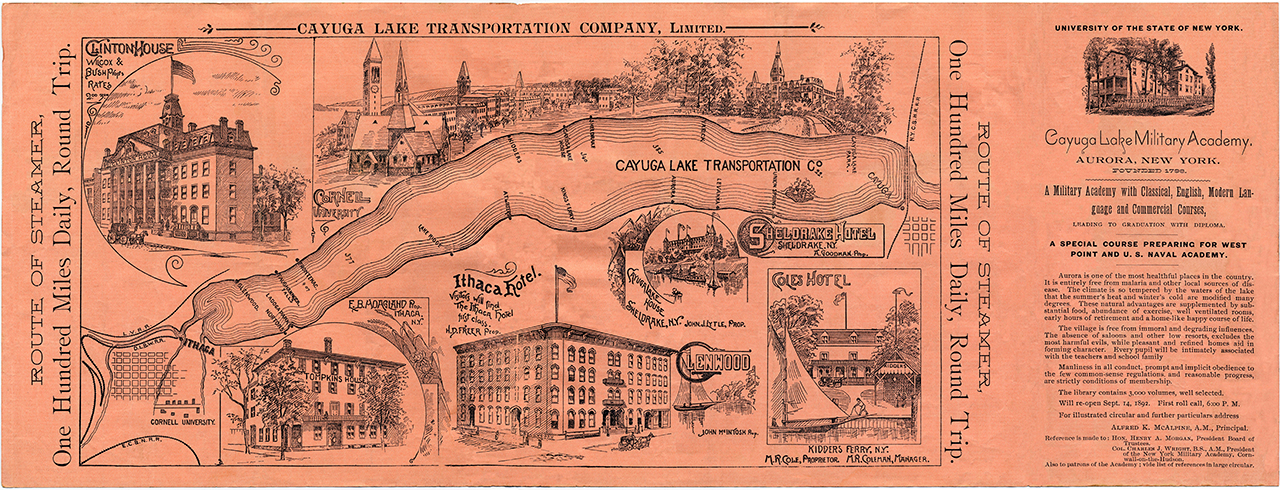
Figure 6. An advertisement for the Cayuga Lake Transportation Company, ca. 1892. The steamer served the same communities around Cayuga Lake that are served by state routes 34, 34B, 90, and 89 today. A high-resolution version of this figure can be downloaded from http://freepages.genealogy.rootsweb.ancestry.com/~springport/pictures75/7548cleaned2sharp.jpg (use “Save link as” to download before attempting to view)
The emergence of dense agrarian feeder hamlets along transportation lines mentioned in my Visioning County Food Production series[13] is more likely to proceed as I have argued here, by salvage of the existing built environment, than by expensive new development as in the present ecovillage model. However, the reorganization of the Tompkins County food production system, food economy, and resultant urban and suburban land use that I explored in that series is more conceivable in its urban and suburban population of 100,000 than in a larger metropolitan area, again for reasons that I have discussed here.
Conclusion
There is a fourth scenario for the nation’s metropoles that temporarily could partially avert the one I have described as most likely. Governments could proclaim a “wartime economy” and create a program of economic policies that redirects remaining fossil fuels and other nonrenewables to uses that adapt urban areas to a low energy future. If governments were to make appropriate major changes in economic priorities, for a while they could maintain urban populations and support levels of urban activity and consumption that are higher than what I have described. Perhaps Departments of Descent would emerge and begin setting economic policy, at least locally.
This would amount to converting the “free-market” economy to a mixed command economy, which while common in many countries, generations here in the US have been taught to regard as evil. However, our sophisticated “public relations” industry has surmounted greater challenges in manipulating the collective consciousness, and may well show itself equal to the task of achieving a flip-flop in public thinking. Whatever the success of a period of legislated economic planning, its main positive function would be to delay the inevitable return to a solar energy economy long enough to help society prepare and adapt.
The present degree of external private control of local economies is backed by government policy at all levels and is a major obstacle to adaptation to the needs of the energy descent. Therefore, an even better scenario that goes beyond emergency economic planning at a national level might be a national program to gradually devolve centralized economic control over the production of necessities to local communities, which would even give them the potential to experience economic democracy if they are so inclined.
But these scenarios might be too much to expect from the vested interests that control much of state and federal policy making. Hence my thinking about scenarios here has taken the route of cautiousness; it assumes that because the notion of public planning of economic resource use in the public interest at any level of government has become alien to US cultural values, it is more likely that cities and suburbs will be left to self-reorganize more or less chaotically into forms that can support some level of human habitation in the energy descent.
Because of all the contingencies to consider, I believe it impossible to estimate with a useful degree of probability the pace at which the scenario that I have described will come to pass. At present, for example, debt at all levels of social organization is being used to put off the inevitable, although it will only make a later transition more difficult. However, the gradual failure of the energy-intensive metropolitan way of life is already making itself felt in declining living standards for the great majority who are caught up in it. Insolvency is increasing in municipalities, forcing them to start filing for bankruptcy. Sooner or later in coming years and decades, most of us will be forced to organize our lives differently. This attempt to picture the consequences of declining energy for urban and suburban areas hopefully will facilitate that transition.
Notes
[1] Kunstler, James Howard. The Geography of Nowhere: The Rise and Decline of America’s Manmade Landscape. Simon & Schuster, 1994.
[2] Kunstler, James Howard in The End of Suburbia, 2004. http://www.youtube.com/watch?v=Q3uvzcY2Xug
[3] Vail, Jeff. “Resilient Suburbia,” 2010. http://www.jeffvail.net/2010/01/resilient-suburbia-toc.html
[4] Tainter, Joseph. The Collapse of Complex Societies. Cambridge University Press, 1988.
[5] Owen, David. Green Metropolis: Why Living Smaller, Living Closer, and Driving Less Are the Keys to Sustainability. Riverhead Books, 2009.
[6] Fridley, David. “Embodied Energy: An Alternative Approach to Understanding Urban Energy Use.” The Oil Drum, August 12, 2010. http://www.theoildrum.com/node/6842
[7] Owen, David. Op. cit.
[8] Odum, Howard T. and Elizabeth C. Odum. A Prosperous Way Down: Principles and Policies (University Press of Colorado, 2001), p. 174. Written by pioneers in the application of systems ecology and energetics to problems of society.
[9] Heinberg, Richard. “Fifty Million Farmers.” Energy Bulletin, November 17, 2006. http://www.energybulletin.net/node/22584
[10] Kunstler, James Howard. “Back to the Future: A roadmap for tomorrow’s cities.” Orion, July/August 2011.
[11] Kunstler, James Howard. Too Much Magic: Wishful Thinking, Technology, and the Fate of the Nation. Atlantic Monthly Press, 2012.
[12] Vail, Jeff. “Envisioning a Hamlet Economy: Topology of Sustainability and Fulfilled Ontogeny,” 2009. http://www.jeffvail.net/2006/04/envisioning-hamlet-economy-topology-of.html
[13] The series was published here in six parts:
http://tclocal.org/2009/07/visioning_county_food_producti.html
http://tclocal.org/2009/09/visioning_county_food_2.html
http://tclocal.org/2010/02/visioning_county_food_prod_3.html
http://tclocal.org/2010/05/visioning_county_food_prod_4.html
http://tclocal.org/2010/06/visioning-county-food-prod-5.html
http://tclocal.org/2010/07/visioning_county_food_prod_6.html
by Karl North
This series of articles is an exploration of designs for agriculture in Tompkins County to approach sustainability in a future of declining access to the cheap energy and other inputs on which our industrialized food system relies. In earlier parts of this series, I proposed principles of agroecosystem design; addressed the key issues of fertility, energy, water, and pest control; and pictured the future county food system as a whole, including its historical context, implications, and the interdependencies among the parts that will make them most effective as an integrated system. I said that providing for the local food needs of urban populations requires a design that integrates three overlapping categories of production systems: urban agriculture systems (many small islands of gardening in the city center), peri-urban agriculture (larger production areas on the immediate periphery), and rural agriculture (feeder farms associated with village-size population clusters in the hinterland of the city but close enough to be satellite hamlets).
In this month's article I will consider the needs and resources that will shape the design of peri-urban agriculture systems around the city of Ithaca, and offer a case study as a design example.
Figure 1. Cooperative farms on the edge of Havana, Cuba
Cities are often ringed with suburbs, parks, and industrial and commercial zones that can be converted to larger, more integrated agricultural systems than densely populated urban neighborhoods (Figure 1). Deer and rodents have proliferated in the urban-suburban boundaries that are excellent edge habitats for these species. Agriculture in these areas will need to achieve deer and rodent control by fencing that is effective against jumping and burrowing and by regulated trapping for meat and hides to eventually reduce populations.
The best candidates for conversion to farming are sites that have good soil and water resources yet are close enough for easy access by urban consumers and potential farm labor. Two such areas on the periphery of Ithaca are the flood plain beside the lake and inlet and the nearest locations on the main existing transport routes, particularly those with existing rail lines, north up the east edge of the lake and south along route 13.
The flood plain
One-sixth of 19th-century Paris was devoted to intensive urban gardens, prominently in the Marais (wetland) on the right bank of the Seine River. Fueled by manure from the city's thousands of working horses, peri-urban gardens fed Parisians with greens, vegetables, and fruits the year around. The history of a similar district on the edge of climatically similar Ithaca indicates its food production potential. This neighborhood was once home to a distinctive waterside community of fisher-farmers who, despite their lower socio-economic status compared to some Ithacans, were able to achieve relative self-sufficiency on the rich alluvial soils and aquatic resources of their neighborhood.
Ithaca has a unique resource in these lakeside and inlet soils. They are potentially the most productive agricultural land in the county when converted to the chinampa-style systems described in Part Two (Figure 2).
Figure 2. Mexico City chinampas
Some of this land may now be “brown fields” of soils that are polluted from years of commercial and industrial use but can be reclaimed biologically. Bioremediation can take various forms. Several years of intensive grazing and repeated trash plowing and replanting of grass cover not only builds soil organic matter rapidly but cleanses it as well by bacterial action as the soils become more biologically active. Instead of normal plowing that buries sod, trash plowing upends it for fast aerobic decomposition. If this is insufficient, raised beds with imported soil are a solution that has worked in many urban locations.
Land use policy for the district would have to change to reflect the food production priorities of the energy descent. Some lands now dedicated to industry, the commercial strip of big box stores, and parts of parks and the golf course will be acknowledged as prime farmland. Figure 3 illustrates examples of potential waterside farm sites.
Figure 3. Examples of potential waterside farm sites on the edge of Ithaca
The politics of conversion of water-side lands to prime food production sites will require a new mindset. Agriculture may be the best use of some of the land now devoted to recreational activities like sailing, picnicking, and golf. Consumers accustomed to shopping in national chain stores will need to learn that they represent what Wendell Berry in The Unsettling of America called an extractive, colonial economy. This economy transfers wealth to metropolitan centers of power from rural peripheries and operates at many scales, from impoverished banana republics like Nicaragua, to shrunken agricultural towns in Nebraska, to the depressed areas of upstate New York. Thus the national chain stores that ring the Ithaca periphery are economic “monocultures” that strip economic wealth from the county just as agricultural monocultures drain fertility from the soil.
Transport route locations
Conversion to more sustainable food production requires more people living closer to food production in order to provide labor and to facilitate nutrient recycling. Energy descent writer Richard Heinberg estimates the need for 50 million farmers in the U.S., up from 2 million today.[1] In a similar assessment, Swedish systems ecologist Folke Günther estimates that the rural farming population needed to support an urban community should be 12 times the urban population. The starting point in our case is a county population of 100,000, of which 30,000 is urban. To achieve the necessary balance, Günther suggests relocation of some urban and close suburban populations to clustered housing in satellite farming villages[2] as older urban housing is replaced by urban gardens. The most economical location for some of these peripheral ecovillages might be in the peri-urban agricultural district along the main transport routes near the city.
Ideally this process would be part of a general physical redesign of both the urban and hinterland communities according to the model that emerged in Europe, where centuries of higher population densities have dictated more careful land use planning. Even today, European towns large and small are characteristically dense clusters of buildings that end abruptly in agrarian vistas.
Visioning a peri-urban case: Waterside Gardens
Commercial strips and malls that typify the urban edge, vacated in the shrinking national economy, are prime candidates for a public takeover that would convert their parking lots to agriculture and the empty buildings to farming and related community uses. To exemplify this conversion, we will envision a farm operated as a commercial cooperative, using a future abandoned Wegmans waterside parking lot and supermarket building (one of the locations outlined in Figure 3). Let's call our imaginary cooperative “Waterside Gardens” (Figure 4).
Figure 4. Waterside Gardens (artist's conception by Jane North)
A policy framework. The dirty little secret of small farms is that they don't make much of a profit in competition with industrialized agriculture. A food policy framework guarantees the economic viability of Waterside Gardens:
- As part of a county-wide green belt policy to stop and convert urban sprawl, the city has remunicipalized most of the inlet area from the lake front to Buttermilk Falls, providing a free lease to co-ops like this one as long as they continue to build food security and food sovereignty in the county.
- In the wake of widespread demand for local food sovereignty, the country has revised the Constitution. As part of a growing reliance on local, county-wide economic policy making, a tariff is now levied on food coming into the county based on food miles and the ability of local agriculture to provide the product.
- A trolley stop on the public light rail line serves the site to bring agricultural inputs to the co-op and consumers to its retail food market.
Models of ecological health and productivity. Waterside Gardens incorporates two highly productive models of small-scale agriculture that have proved themselves to be effective historically in peri-urban agriculture: chinampa-style canal-side gardens (Mexico city)[3] and the French intensive market garden (Paris).[4]
In the gardens that use the inlet directly, hydrologically controlled subcanals between garden beds divert water from the adjacent inlet canal. These alternating strips of water and land crops are managed to make the system highly productive in several ways:
- Constant sub-irrigation of the growing beds;
- Aquaculture production from a self-feeding, integrated system of water plants and animals;
- Surplus fertility from the aquatic system in the form of muck dredged periodically from the canals for the adjacent bed soils;
- Temperature stabilization from the waterways that improves daily crop growth and extends the growing season.
Farther from the water lie the frame and cloche beds characteristic of the French intensive method. Despite the development of biomass-based plastics, competition from higher priority biomass uses like food and heat has prompted a return to the French tradition of glass for frame covers and the bell-shaped cloches that create the microclimates to protect beds and individual plants.
Windmills pump canal water into raised tanks to provide a constant reserve of gravity-fed irrigation water. Adjacent ponds capture and biocleanse storm water that runs off the city's hills, constituting a water reserve that makes the system resilient to drought.
Another input essential to the intensive method is a constant and copious supply of fresh manure that is placed under and around frames and cloches to maintain growing temperatures in these all-season gardens. Initially the only manure source was the small population of livestock that peri-urban production systems can integrate. However, diminishing supplies of fossil fuel and limited supplies of local fuels like biogas from municipal black water processing have driven local transportation partially to rely on animal power. A growing mule population now transports people and produce around the county, much of it efficiently on the rebuilt light rail network. Like other peri-urban farms, this one provides stables for some of the mule contingent in return for the steady supply of hot manure. Their hay is transported by water directly into docks at the garden site from farms around the lake.
Wind protection is part of the intensive gardening system. The old supermarket and the high hedges on the northeast and northwest edges stop the coldest prevailing winds, and low walls throughout the gardens reduce wind at plant level while letting in sun.
While much of the French system is possible in urban agriculture, peri-urban spaces allow its full development as it originally functioned on the outskirts of Paris. This is because its year-round production requires quantities of hot manure as well as the constant attention of full-time gardeners highly skilled in the careful timing of watering, frame and cloche ventilation, and protection of frames from sun and cold. This garden recaptures the full knowledge- and management-intensive qualities that made the Paris market garden system so successful.
A more extensive system. The co-op includes a third, more extensive gardening system to grow crops like roots and tubers that need more space and to integrate small animal production. To fertilize this garden, the co-op manages a facility in which pig turners enhance the vermicomposting of part of the city's segregated organic waste stream.
Originally judged a brownfield, the soil of this part of the market garden spent its first years of conversion to agricultural quality under intensive grazing alternated with heavy applications of compost seeded with fast growing forages in the cleansing process described earlier. Now it consists of beds long enough to be worked by some of the mules housed in the co-op and grassed alleys wide enough to permit farm vehicles and grazing with rabbits and poultry in movable pens, as illustrated in Figure 5. In season, the rabbits thrive on an all-grass diet, and feed for the poultry is supplemented with part of the garbage and worms from compost production. The alleys are lined with composting sheds to which the poultry have access as their grazing pens are moved along the alleys. In all seasons the pigs, poultry, and rabbits consume the co-op's garden waste as one of their roles in the system.
Figure 5. Grass-fed rabbit production at Northland Sheep Dairy, a farm near Tompkins County
The old supermarket now serves many new functions. In addition to the stables, it houses farm tools and machines and harvest and feed storage areas. It also includes community centers to market products from adjacent community gardens, train new farmers, and house full-time farm workers and food processing centers. The south front is a passive solar greenhouse that heats the building and grows vegetable and nursery transplants for the rest of the farm.
Boundaries of the tripartite farm as well as individual beds are specifically designed for multiple functions. They include habitats that attract beneficials and trap pests before they reach food plants; bird and bat houses; flowering plants to attract pollinators; food bearing bushes, trees, and trellises that act as shelter belts against wind and sun; and walkways and benches to function as a parkland that brings urban residents into contact with the gardens.
As with much of peri-urban agriculture, the size of this co-op creates heavier seasonal labor needs than city gardens. With a large city population close at hand, however, it manages to attract enough seasonal workers by paying them with credits they can use when they purchase the food products of the enterprise.
Notes
[1] http://www.energybulletin.net/node/22584
[2] http://www.holon.se/folke/lectures/Ruralisation-filer/v3_document.htm
[3] http://en.wikipedia.org/wiki/Chinampa
[4] Weathers, John. 1909. French Market Gardening. http://ia331426.us.archive.org/3/items/frenchmarketgard00weatrich/frenchmarketgard00weatrich.pdf
by Karl North
This series of articles is an exploration of designs for agriculture in Tompkins County to approach sustainability in a future of declining access to the cheap energy and other inputs on which our industrialized food system relies. In earlier parts of this series, I proposed principles of agroecosystem design, addressed the key issues of fertility, energy, water, and pest control, and pictured the future county food system as a whole, including its historical context, its implications, and the interdependencies among the parts that will make them most effective as an integrated system. I said that providing for the local food needs of urban populations requires a design that integrates three overlapping categories of production systems: urban agriculture systems (many small islands of gardening in the city center), peri-urban agriculture (larger production areas on the immediate periphery), and rural agriculture (feeder farms associated with village-size population clusters in the hinterland of the city but close enough to be satellite hamlets).
In this month’s article I will consider the needs and resources that will shape the design of urban agriculture systems in the city of Ithaca, and offer a case study as a design example.
The high institutional and population density of urban areas promotes labor-intensive production methods, community regeneration through cooperative management, and transport efficiency for agricultural inputs and products. The ability to have more farmers per acre permits the kind of management-intensive system that maximizes productivity through close monitoring and good timing throughout the growing season. Increased headcount allows a division of labor to manage diversified production integrated into one system. One neighbor could grow rabbits (Figure 1) and provide manure and meat while another grows vegetables and a third concentrates on fruits.
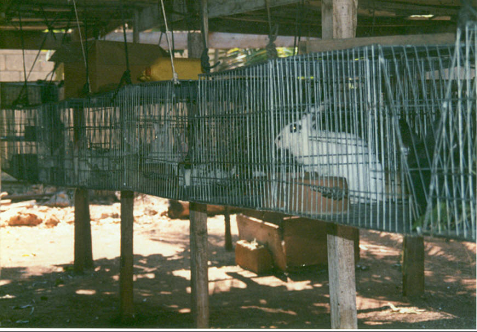
Figure 1. Urban rabbit hutches in Cuba
The abundance of city institutions presents opportunities to build gardening appendages on existing social structures organized for other purposes. In the sudden energy shortage that transformed Cuba’s agriculture, schools, workplaces, and even governmental institutions were quick to become partly self-sufficient in food production. As awareness builds that gardening is a form of physical education whose value increases relative to, say, football, schools will see the need to devote more playground space to school gardens.
Intensive Design
The high productivity of urban agriculture has proven itself in many cities, notably in the severe food crisis that Cuban cities experienced in the 1990s.[1] Productivity in urban agriculture comes in great part from intensive design and management. The greater labor required for intensive production is potentially available in urban agriculture and can make it highly productive in several ways. Space can be used more efficiently than in extensive row cropping. Intensive growers can plant many vegetables in permanent beds instead of rows, minimizing walk or machine alleys between rows and concentrating soil building in the beds rather than the whole field. Also, farmers can plant crops of fast maturing foods, like salad or cooking greens, in spaces between large, slower maturing ones like broccoli. This practice of planting so-called catch crops makes more intensive use of limited space during the growing season. Tiered design that uses light efficiently is possible. Crops can be grown in companion polycultures to trade ecological services; legumes like pole beans fixing nitrogen for the corn that provides the pole, or a row of peas climbing a wall while fertilizing a row of carrots. Maximum use and close management of protective devices like frames and cloches permit not only season extension but also more effective temperature and moisture control of plant growth during the regular season. Finally, the consumers of urban-grown food are close enough to permit effective recycling of nutrients into the garden soil via backyard compost piles and composting toilets, partially or totally eliminating the need for space for compost crops.
For these reasons, urban spaces can be nearly 15 times more productive than rural farms.[2] In World War II, residential “Victory gardens” in the US produced a quantity of fresh vegetables equal to the total commercial output of these foods.
The Ithaca Urban Environment
Ithaca’s topography of central flatlands surrounded by steep hills presents distinctive opportunities and constraints for urban garden design in each area. Josh Dolan’s map of current and potential community and school garden sites in Tompkins County illustrates some of the possibilities.[3]
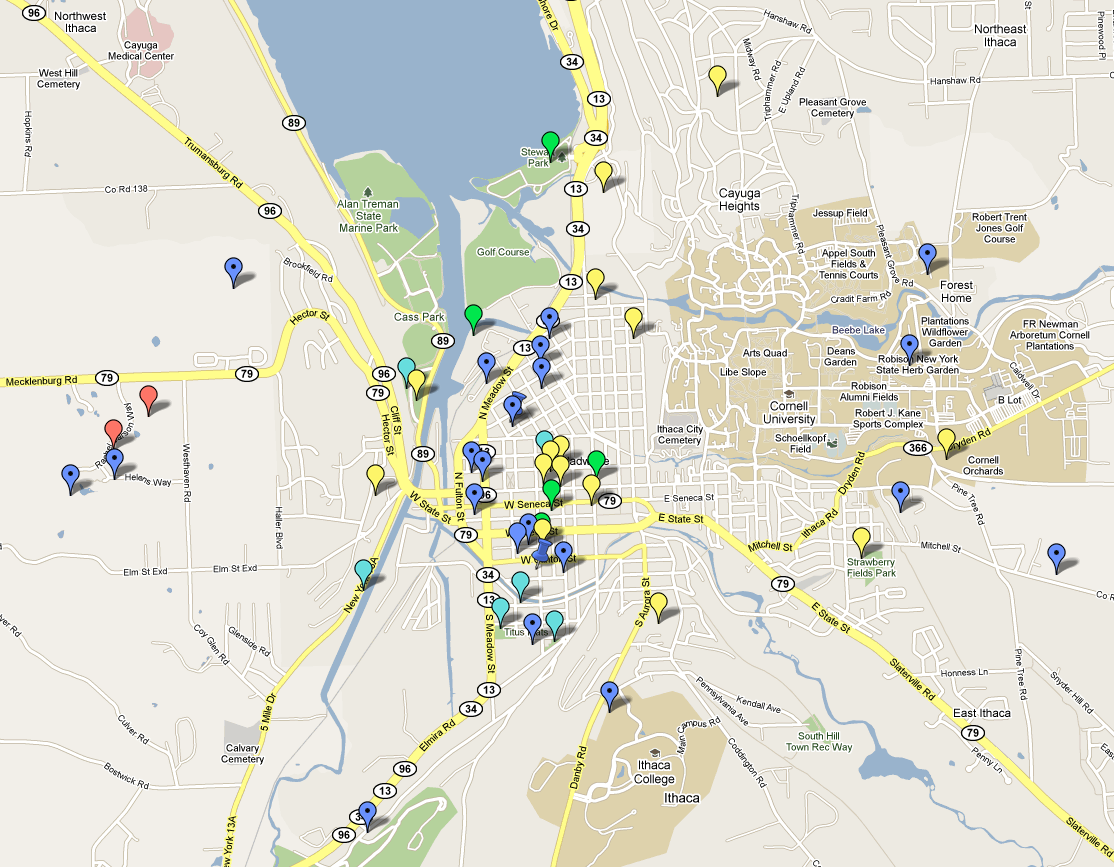
Figure 2. Community and School Gardens of Tompkins County. Blue = community gardens; yellow = school and educational gardens; green = farmers’ markets; light blue = sites that have expressed an interest in gardens or have been identified as potential sites for new community gardens. Click or see link in footnote for more detail
On the hillsides, some food production will require terracing, but the many south and west facing retaining walls and house walls in residential neighborhoods on Ithaca’s steep hills provide opportunities for vertical growing. This will maximize use of space, which is important in urban gardens. Vine plants can sometimes grow either from the top of the wall down or from the bottom up. Twine or poles laid against the walls help plants like tomatoes and beans get a grip going up, and planks or slates shoved between wall stones support heavy fruits like melons or squash as they grow bigger.
Projections of climate change for the Northeast include a 20 to 30 percent increase in winter precipitation over this century, but hotter summers when water is needed for growing, suggesting a greater need for seasonal water capture.[4]
The hills of Ithaca have great potential for gravity irrigation if water is distributed downhill through many residential gardens. Pools at each site can store water to provide gravity irrigation to terraces via berms and swales. Institutional sites might justify tapping this gravity flow to power small grain mills or electric generators.
On the city’s flatlands, current uses of many commercial sites will become obsolete in the energy descent. Energy inefficient businesses and parking lots will become prime sites for takeover by guerilla gardeners, building pressure for legalization. Water is relatively abundant in our environment, but because of its importance for highly productive food growing, water reserves collected from roof drains into garden-side irrigation pools will be vital to build resilience into urban production systems[5]. More resilience can be achieved by routing roof water into attic or upper story tanks for household use and then channeling the overflow into irrigation pools.
Visioning an urban agriculture case
A group of neighbors has decided to form a loose gardening cooperative, because a pooled effort will solve the core production problems of fertility, water, pest control, and energy more efficiently than would completely individual projects as well as promoting the sharing of equipment and pooling of knowledge. In individual backyards they have been growing a few vegetables and fruits, often in containers they can bring inside for extended season growing[6]. Many neighbors have enough small stock such as rabbits, chickens, and pigeons to process organic kitchen garbage; however, their yards are mostly too small for the amount of food they want to produce as a co-op.
The neighborhood group has agreed to devote most backyard space to compost production and the collection of irrigation water for the co-op. They have quietly attached composting toilets to their houses and built filter/digesters for household greywater and little ponds to store greywater and roof water, while currying support for legalization when the time is politically ripe. Eventually the city created property ownership and lease contracts with management agreements that provide incentives for ecological management, like composting of residential waste streams and maintenance of food perennials on the property.
To make space for the main garden the neighborhood co-op razed a building abandoned as too costly to renovate for energy efficiency, and depaved an adjacent parking lot that became obsolete when the city got serious about public transportation. The land owners were happy to lend the properties in long-term agreements because the city had created land tax credits for land lent for urban agriculture. As in the urbanization of agriculture in Cuba (Figure 3), our neighborhood co-op often left rubble in place and created raised beds over it with soil imported from nearby rural farms and compost from backyard and municipal production sites. This photo also illustrates the use of a pest insect trap crop of corn planted at the end of the raised beds containing other crops.
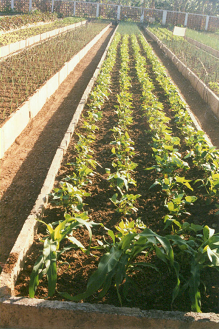
Figure 3. Urban coop garden, Pinar del Rio, Cuba
The co-op employs a master gardener to design and manage the garden to include the polycultures, rotations of crops among beds, water, compost, and mulch acquisition and application that will maximize the health of the system. Because it integrates a greater diversity of crops and habitats, this system achieves a higher level of sustainability than community gardening by individual allotment. Each household is assigned responsibility for working a section of the garden under the direction of the manager. As different crops or polyculture combinations rotate through each section, all neighbors gradually have become skilled at growing all the foods that the co-op produces. The manager arranges for extra labor when necessary, as in planting and harvesting, for compost and water from backyard ponds, and for supplemental compost from the city’s public composting enterprise.
The project design includes a number of elements not yet found in many urban gardens: hot and cold frames and nursery beds to feed transplants into the garden; glass bed covers to provide season extension; habitats for beneficials and other native species; insectaries, bird houses and trap and repellent crops for pest control; border hedges of nut and fruit bushes and trees and other perennial crops; and artistic corners in which to rest and enjoy the garden.
The neighborhood co-op provides regular shares of harvests to its members, and sells surplus produce in a market stand on site using the local county currency. Some members operate small processing enterprises to preserve co-op output for the neighborhood.
This model of urban agriculture may work in a number of locations, but many other models will be needed that are adapted to conditions of specific sites or parts of the city.
[1] Murphy, Catherine. 1999.Cultivating Havana: Urban Agriculture and Food Security in the Years of Crisis. Development Report Number 12. Food First: Institute for Food and Development Policy.http://www.foodfirst.org/pubs/devreps/dr12.pdf
[2] Ableman, Michael. “Agriculture’s Next Frontier: How Urban Farms Could Feed the World.” Center for Urban Agriculture at Fairview Gardens. 2007.http://www.fairviewgardens.org/pub_next_frontier.html
[4] Confronting Climate Change in the Northeast. Summary of a 2007 study conducted in part by the Union of Concerned Scientists.http://www.climatechoices.org/assets/documents/climatechoices/new-york_necia.pdf
[5] Two resources on water management for urban agricultural use: ftp://ftp.fao.org/docrep/FAO/011/ak003e/ak003e05.pdf; http://www.ruaf.org/sites/default/files/Chapter%209.pdf
[6] http://www.gardeningknowhow.com/urban/designing-your-container-vegetable-garden.htm
By Angelika St.Laurent
Small livestock and poultry production could help Tompkins County address many of the food and materials challenges it will face as the cost of energy climbs.
Benefits of local and urban small livestock and poultry production
Today, most animal products come from the three species that are most easily confined in mass production units and can live on diets mostly consisting of corn, the grain most highly subsidized by government programs: cattle, pigs, and chickens, with turkeys a distant fourth. The products of other traditional livestock, such as rabbits, goats, geese, ducks, and sheep, have mostly disappeared from our plates. Exotic livestock, such as guinea pigs and emus, are even less present in our cuisine. Other animal products like wool and down in clothing and bedding are frequently replaced by synthetics.
This situation poses both a challenge and an opportunity. Products of lesser-known livestock have a smaller market, as many people are unaccustomed to different tastes and textures. On the other hand, there is less industrial competition for less popular livestock, which makes it easier to run a small business successfully. Moral concerns about animal well-being also benefit small-scale poultry operations, which run differently from factory farms and are closer to consumers who want to know about them. Several farms in Tompkins County already raise goats, sheep, alpacas, and free-range poultry. It is likely that under energy descent conditions, the prices for mass-produced animal products will increase, creating a wider market for alternative animal products.
Livestock and poultry provide us with easily digestible protein and fat; leather; fibers and feathers for clothing; manure for fertilizer; and last but not least, entertainment and enjoyment. Despite these benefits, opponents of animal-based agriculture often point out that a mostly plant-based diet feeds the most people on the least area of agricultural land. However, this requires that the agricultural soils are in good shape, and maintaining soil fertility in purely plant-based agriculture is time-consuming and dependent on fertilizer imports. Moreover, many soils in Tompkins County, especially in the south of the county, are shallow, sometimes poorly drained, acidic, and low in nutrient content. Raising animals is frequently the best use for these soils and is likely to result in long-term soil improvement. Small livestock in particular can safely and sustainably graze sloped areas that would erode under the hooves of cows or horses. The integration of animals in crop production helps maintain soil fertility and can reduce weed and pest pressure.
Some urban environments are too shady or otherwise unsuitable for crop or vegetable production but provide conditions good for raising rabbits or a small flock of chickens. Considering that a good laying hen produces four to seven eggs a week, even a small flock of five chickens can provide a household with all the eggs needed for their own consumption and some left over to sell. Urban animal husbandry could provide a valuable opportunity for low-income households to improve their diets and generate some extra income. Permitting small livestock in residential areas could help relieve poverty in times of economic hardship. Bedding for urban animal husbandry can partly be supplied by fall leaves; urban livestock owners eager to remove fall leaves from private gardens and public spaces could relieve town/village and garden owners of the responsibility.
Difficulties of local and urban small livestock and poultry production
In some urban and residential areas (for example, the City of Ithaca and the Village of Dryden), it is forbidden to keep any animals other than pets. Reasons for this general ban on livestock are concerns about noise, smell, rodents, and health issues. These are serious issues that need to be addressed if considering small-scale animal raising in residential areas.
In fact, small-scale animal husbandry is possible without causing these problems. Odor and rodent problems usually arise out of overcrowding, poor hygiene, or inadequate feed storage. Animal housing in sufficiently big coops and cages with regularly changed bedding does not stink, and feed storage in properly locking containers does not attract rodents. Hygienically kept animals are also healthy animals. It is in the interest of livestock and poultry owners to keep their animals under inoffensive, good, and hygienic conditions. Unfortunately, there are always some owners who lack this insight. Therefore, permitting livestock or poultry raising in residential areas requires some sort of supervision in order to protect neighbors and animals.
One possible way to insure hygienic livestock raising in residential areas and at the same time ease the development of small livestock businesses in rural areas would be to reinstate the position of County Veterinarian. A County Veterinarian could provide advice in difficulties, give seminars for aspiring livestock keepers, and inspect and judge facilities if neighbors raised concerns. The Cornell College of Veterinary Medicine could add the office of County Veterinarian to student rotations, which would provide more manpower for the job at hand and at the same time provide students the opportunity to become familiar with animals that are less prominent in the curriculum.
At present, only a small percentage of the population is familar with the how-tos of livestock raising, and the task of caring for an animal other than a pet might appear overwhelmingly difficult. Some hands-on experience for prospective livestock keepers could both develop a reasonable idea of the challenge and protect livestock from improper handling. The 4H program in Tompkins County already offers children and teens the opportunity to become familiar with livestock raising. Knowledge about raising small livestock could also be spread by integrating classes on animal husbandry in a degree program in sustainable agriculture at TC3. A K-12 program in livestock management for area schools could be developed at the New Roots School. And most small livestock owners are happy to share information and advise on a private level.
Unfortunately, raising animals, or food in general, on a home scale also carries a certain socioeconomic stigma as a sign of poverty. At present, this stigma creates a strong motivation to oppose animal husbandry in residential areas. Some private trend-setting is crucial to help overcome this perception. Every clean backyard chicken coop, every clutch of home-produced eggs or batch of locally-produced goat cheese brought to a potluck, every showing of crafts made from local wool is a step toward making small-scale animal husbandry fashionable.
Frequently, the cost of the animals' accommodations vastly exceeds the price of the livestock or poultry itself. While the first benefits of a small livestock or poultry operation can be reaped usually within a couple of months, breaking even on initial investments can take years. Allowing animals to forage for part of their food can bring down feed costs substantially, spare a fair amount of labor cleaning coops and cages, and improve the quality of the product. Nevertheless, fencing is essential for safekeeping of both animals and neighboring gardens. Good fencing material comes at a substantial price. Shelter is a second big unavoidable investment. Recycled old fencing and building material can bring costs down a bit. Sheds, garages, screened-in porches, and even old car bodies can all be turned into acceptable animal housing.
One additional difficulty in raising poultry close to old buildings is the potential lead contamination from old paint. Poultry can ingest lead-containing particles that make eggs and meat unfit for human consumption.
Action items for local residents to increase local small livestock and poultry production:
Support your local farmers: Buy locally produced eggs, goat cheese, and meat.
Looking for gifts for the holidays? Consider mittens, scarves, or hats made out of local alpaca wool.
Be a trendsetter: Serve your guests a dish containing unusual animal products. They will be surprised how tasty your dishes are.
You have a big lawn and don't really like mowing it? Consider renting out the space to someone who keeps sheep.
Lobby for the right to keep chickens and other small livestock in residential areas.
Offer a chicken owner the opportunity to rake and take away your fall leaves.
You own an old barn/shed? Consider keeping it in shape, it might become useful once again.
Enroll your children in 4H livestock programs.
Action items for local governments to increase local small livestock and poultry production:
Consider reinstating the office of County Veterinarian. A County Veterinarian could be very helpful for starting up small farms.
Consider allowing poultry and small livestock in urban areas. Keep the ban on noisy poultry like roosters, guinea fowl, and peacocks.
Notes on particular livestock and poultry choices
- Rabbits
Rabbits are probably the livestock best suited for urban environments. They are winter hardy, do not require much space, and make very little noise. Rabbit manure composts easily and is far less smelly than that of poultry. Cages and hutches can be built cheaply, often with recycled materials. Being kept in cages, rabbits are not affected by heavy metal contamination in the soil. Rabbits are considered pets; thus, there are no legal restrictions on raising a small herd of rabbits for home consumption in an urban setting. Rabbit meat is very lean, and probably healthier than many other meat choices. The greatest challenge for a rabbit-raising business is that not many people are inclined to eat an animal they are used to considering a pet.
- Chickens
Chickens are the classics in backyard poultry keeping. The time investment in a small flock of hens is about 10 minutes a day for feeding, watering, and egg collection, plus 30 minutes a week to clean the coop. Hens lay eggs without roosters, and egg production is therefore possible to accomplish without much noise. There are many elegant ways in which chickens can be incorporated into gardening (e.g., chicken tractors). Keeping chickens and other small livestock is currently not allowed in the City of Ithaca and the Village of Dryden. Also, lead contamination may make poultry keeping inadvisable in some gardens.
- Ducks
Ducks grow very fast and have the most economic conversion ratio of feed into body mass. Even though they grow to a slaughterable age faster than chickens, their meat remains tender for much longer if slaughter is delayed. Smaller varieties also lay plenty of big eggs, which are excellent for baking. Ducks are very winter hardy, quiet, easily confined, and rarely bothered by diseases. Ducks are unique in their taste for slugs. (In slug-plagued northern Germany, small businesses rent out ducks to "deslug" gardens.) Compared to chickens, ducks are more labor-intensive, are more vulnerable to predators, need more space, and always require a source of liquid water.
- Sheep and goats
Sheep and goats are too big to be kept in an urban setting, but a large suburban property could be big enough to accommodate them. Sheep and goats need substantial investments in barns and fencing. The time investment for a small flock can vary from 5 minutes a day (free roaming in a large garden during the summer) to an hour or more if animals are stabled. Besides the obvious products, they can contribute to landscaping as "lawnmowers." Many landowners like the view of closely cropped grass; with higher energy prices, sheep or goats grazing might become more appealing than the use of a riding lawn mower. Sheep and goats both feast on poison ivy, offering an option for environmentally sound weed removal.
By Josh Dolan
[This is the first part of a two-part series. Post-Peak Land Use Part 2: The Country will appear in two weeks. As usual, we invite your comments. A Land use glossary explains some of the terms used in these articles.]
As we build, so shall we live. — Richard Register
As we look for answers to the twin crises of peak oil and climate change, as well as the widespread symptoms of social decay and collapse such as elevated crime, degraded communities, and broken families, urban design and land use must be one of the central ways that we reform our way of life if we hope to survive. Carbon-neutral cities and towns have the potential to heal our broken culture and create a more desirable, more comfortable, more creative, more healthy, and less stressful civilization. By rethinking and redeveloping our cities, towns, and villages, we can put more people back in touch with the land while freeing them from the shackles of car culture.
Ecocity Principles
The ecocity concept is changing the dialog between the social justice and environmental movements; one ideal must not necessarily be sacrificed for the other. The ecocity movement offers many tools and formulations which can serve to drastically reduce our physical footprint on the earth and thus our carbon footprint. In both the rural setting and the urban, these concepts can be used to create a more fulfilling life for people of all means and backgrounds and greater flexibility in terms of lifestyle choices, residential choices, occupational choices, and transportation choices. Three key principles underlie this shift.
Principle 1: Reversal of the transportation infrastructure hierarchy
cars--->transit--->bikes--->pedestrians
pedestrians--->bikes--->transit--->cars
In order to fully take responsibility for energy security, we must look at one of our major uses of energy: transportation. Private automobiles are the primary means of transportation and by far the most inefficient. By creating conditions in our built environment favorable to walking, biking, and public transportation and by restricting access to private autos, we can take back our public space and reduce our energy consumption significantly.
Auto restrictions have successfully transformed many cities into healthier and wealthier communities. Limited auto access neighborhoods use barriers, parking restrictions, traffic calming, and slow streets to reduce car travel. Narrower streets save money and resources used in their upkeep, are safer by slowing traffic, use less land that could be used as public space or for growing food, reduce runoff, hold less heat and thereby reduce air conditioning, and allow for a greater sense of community ownership. An initiative to reduce paving and parking can facilitate this transition, and tradable depaving credits for private businesses and residents are a useful tool to further this change.
A citywide 20mph speed limit both saves fuel and creates safer conditions for pedestrians and bicyclists. Pedestrian areas can demarcate neighborhood centers and can be used as a tool to strengthen the local economy. This will become necessary for continued access to essential goods and services as the failed big box-model of business breaks down. Car-free housing can save residents money and further reduce the total number of cars in the city, also reducing the need for on-street parking. As fuel prices rise, Ithaca residents will continue to seek formal and informal car-sharing arrangements. Minibuses, delivery vehicles, car co-ops, and electric cars and trucks allow flexibility in moving materials and in the transportation of elders and car-free residents. Tax breaks for car-free living and car sharing make economic sense, especially if the city is able to receive carbon credits for these practices.
As much as we reduce car use, we need to increase access to other ways of getting around. Non-motorized modes such as walking, biking, skating, pedicabs, and cargo bikes should get the priority. Where bike facilities are improved, ridership increases greatly, so every effort should be made to allow access to both urban and rural residents to these facilities. Next comes fixed rail transit powered by renewable energy; personal rapid transit, trolleys, light rail, and traditional heavy rail are all forms that this change could take.
Every effort should be made to restrict the use of private cars in the city. More ways to reduce downtown auto traffic include car/van pools and park-and-riders, which should receive credits from the city. Public transit is subsidized enough to make it more affordable than private cars. Idealy, cars would be taxed if they choose to enter the city center.
Principle 2: Increasing density in walkable centers linked by transit
As the emphasis of our city moves away from car culture, the opportunity arises to change the face of our neighborhoods for the better. The first step is to identify neighborhood and municipal centers that will serve as the nuclei for redevelopment. We can then create specific area plans via a consensus-based planning process. Most medium density areas can be preserved while increasing population in the two to three blocks around centers. Centers themselves can be much denser and more diverse than current neighborhood centers. Clustered businesses and services would line the streets, and essential services would also be easily accessible at street level. Dwelling clusters on the upper floors would put many more people within the new center itself. The public spaces of the center, including the street, would create a maximum of usable, flexible space for neighborhood residents. These neighborhood enhancements demonstrate access by proximity; being there versus getting there.
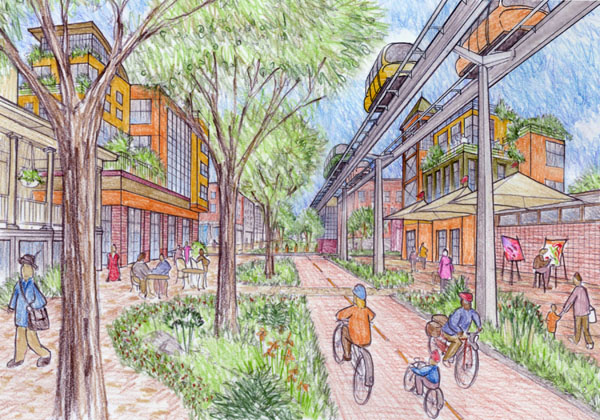
Car-Free State Street. (Drawing by Rob Morache.) A car-free corridor would create a
backbone of pedestrian and bycicle connections through the center
of the city, melding the West End and Commons into a unified whole.
Notice the overhead rail of the PRT (personal rapid transit)
system, one possible form that a fixed transit network could take.
Infill development in current parking lots as well as added
stories would work together to create a much more densly populated
downtown within easy walking, biking, and transit distance from
anywhere in the city, filling the current need for more affordable
housing downtown.
All of these developments would be centered around a transit stop, which would connect the neighborhood with the rest of the city without the need for automobiles. This type of nodal development can only be effective when linked by fixed transit lines. Transit would run throughout the city and connect rural areas along major transit corridors. Although questions exist about how to pay for such a transportation system, we should consider how much we spend collectively on private automobiles, auto infrastructure, repairing the damage done to our bodies and our communities by an auto-centric culture — not to mention oil wars, accounting for cross-cultural costs that can only be estimated.
These improvements can be created mostly by infilling where parking lots currently exist and by enhancing public and semi-public spaces such as front lawns, back yards, and alleys. Existing structures can also be remodeled to accommodate one or two extra floors for commercial spaces, apartments, workshops, etc. Spaces between buildings can be infilled to allow even more diversity of smaller spaces for apartments, studios, offices, etc. Rooftop gardens, cafes, and social spaces can use utilize space that is normally inaccessible and create a more three-dimensional usable space. All of this would be constructed to harmonize with the current built environment.
As the city becomes denser, the amount of walking and cycling to work increases, people are able to work much closer to where they live, and transit ridership increases. Along with the reduced reliance on private cars, air quality in the city will be greatly improved and street congestion will decrease. The dense neighborhood centers can be designed to conserve energy, allow easier recycling and waste management, and allow urban agricultural space. Tools such as the city's comprehensive plan, specific area plans, and neighborhood vision statements can all be used to great effect in shifting development into neighborhood centers. Transfer of Development Rights, or TDR, has also been used effectivly to encourage private developers to build where and what residents want. For more on TDR, see www.cascadeagenda.com/tdr.
Principle 3: Urban cooperative blocks, eco-hoods, and village clusters
The last key principle of ecocity and energy descent crosses from the physical sphere into the social. Urban cooperative blocks, or eco-hoods, are the reconfigured neighborhoods of a low-energy future. Some of the main features of the cooperative block are the common house, common yards and gardens, common parking, common cooking and eating areas, and toolshares. Through resource sharing, cooperative neighborhoods are able to reduce energy consumption while maintaining their relative level of comfort, creating and deepening community structures. There are many models for achieving more cooperation and thus energy savings in neighborhoods, including condominium corporations, non-profit groups, mutual housing associations, limited equity cooperatives, community land trusts, and more anarchic and informal cooperative living situations.
Other ways exist to increase cooperation in neighborhoods. One significant way to build community is to take down fences in backyards to free up more area for other uses. Much wasted space that could be used for growing food and community uses is locked away in the back yards of our cities and largely forgotten. By removing these physical barriers, we also remove some of the psychological barriers that prevent neighbors from approaching each other. Traditional urban design elements that focus on the community, including the zocolo or the piazza, can be forged from the newly freed spaces and allow for natural cooperation and togetherness. Vacant and underused lots can also be transformed into community spaces such as playgrounds and gardens. It must be shown that these changes will benefit residents, encouraging them to take part in the transformation. Tax breaks for urban gardens, city monies for new public spaces, and neighborhood-based celebrations are just some of the possible incentives to induce these changes. We must create sites that demonstrate these innovations now so that people can see the advantages and learn to create them in their own back yards.
Here are some other ideas for creating deeper community connections and energy savings:
Eco parks. Parks can be transformed with the addition of multi-use buildings, community gardens, edible landscaping, bike street and transit connections, and natural wastewater treatment and drainage. In addition, underused public and private spaces can be converted to pocket parks. These should be as diverse as the neighborhoods which they inhabit and should include BBQs, playgrounds, smaller community gardens, basketball courts, and other multi-use facilities. Major parks, such as Stewart Park, the City Golf Course, Washington Park, Cascadilla Gorge, etc., could each have their own theme.
Neighborhood consultas. Neighborhood grassroots governance, planning, and education. Facilitation training, consensus planning, charrette-style development planning, classes and internships for teens and low-income residents, eco-hood programs.
Intersection repairs. Piazzas can be created to calm traffic and create community space. Using natural building and public art, intersections become community spaces that knit together the physical space of a neighborhood. Each neighborhood designs and builds its own piazzas.
Green clubs. Building community and greening the neighborhood; stream stewards, tree-lawn gardeners, community garden co-ops, sew green, mutual aid networks, green workers co-ops, bike clubs, food preservation groups, social clubs, reading and learning circles.
Greenstreets and bikestreets. A network of pedestrian-only greenstreets can take advantage of underused inter-block areas. The greenstreets should connect neighborhood commercial centers, ecoparks, pocket parks, and community gardens. Bikestreets can network between all neighborhoods and parks, providing a sustainable and easy transit mode within reach of all residents. Bikeways should spread out in all directions from the city. All transit connections should have bicycle lockups, bike racks, and special service for bikers to surrounding towns. Example: Cascadilla greenway.
Neighborhood CSAs. To produce a maximum amount of food, open areas should be managed by a neighborhood CSA: a loose coalition of gardeners, urban farmers, and youth program participants. Fruit and nut trees, berry-producing shrubs and canes, and other produce can be planted on every block, in every tree lawn, and in all parks. Connections can also be made with land outside of town that is within walking distance of bus routes and bikeways. Modest housing facilities can enable part-time land access to a wide spectrum of neighborhood residents. Some examples of the neighborhood CSA would be a neighborhood farm at the Ithaca Community Gardens and a neighborhood orchard at the Ithaca Farmer's Market.
Coming next: The Country.
Land use glossary
Land use bibliography
Land use resources

